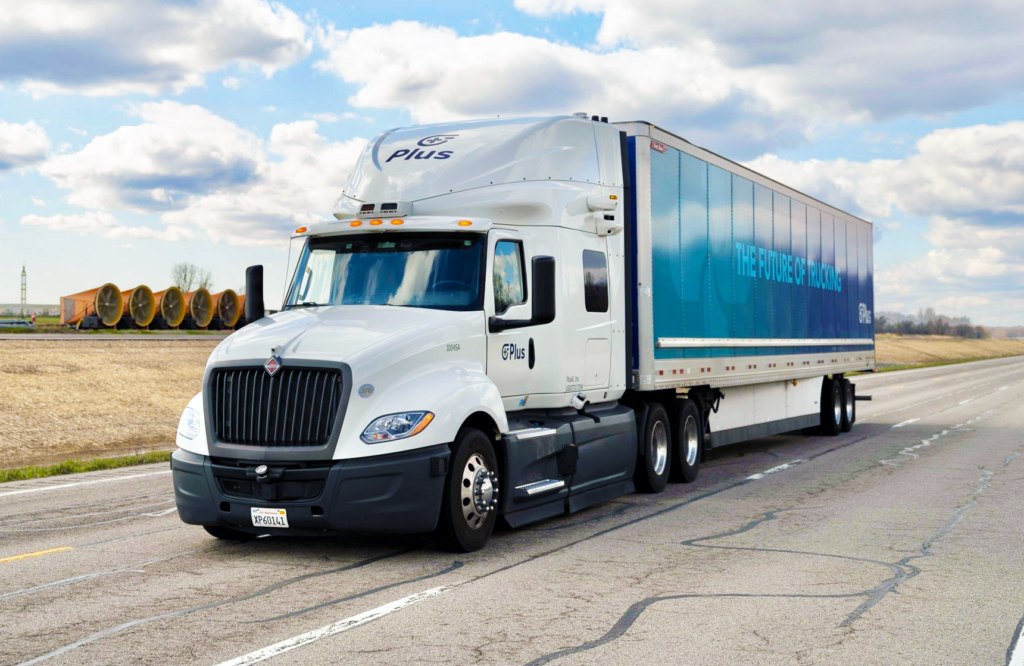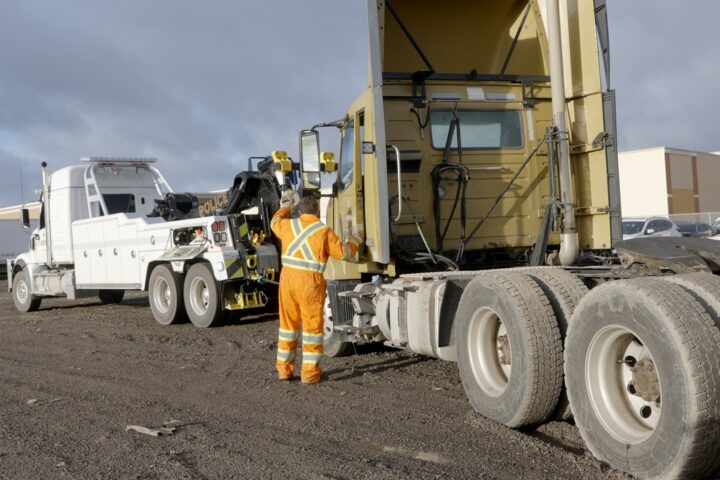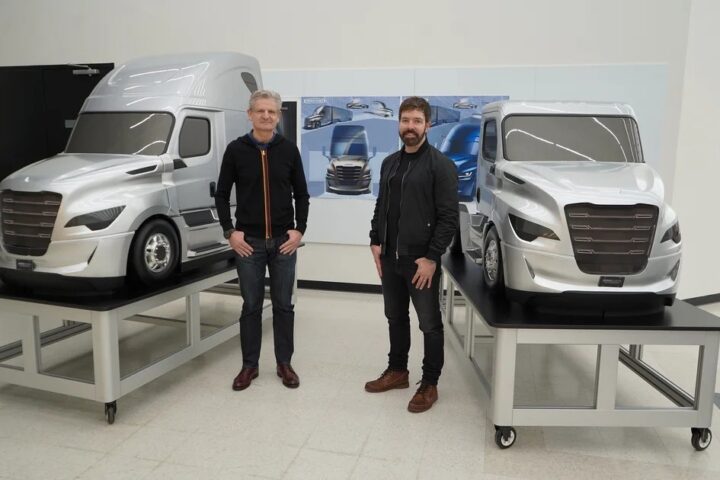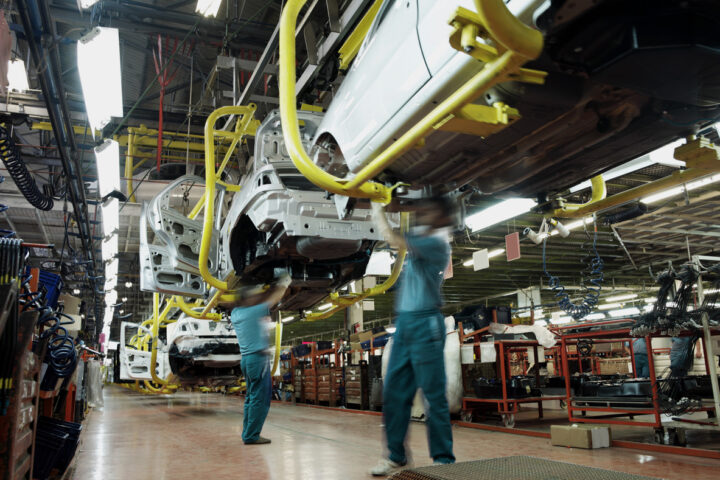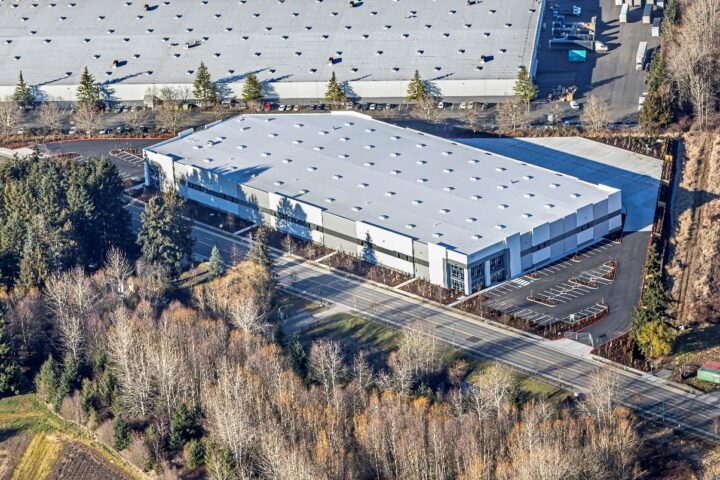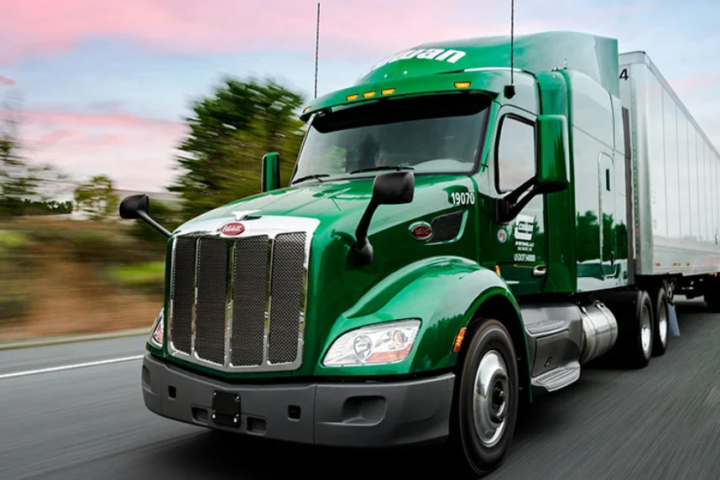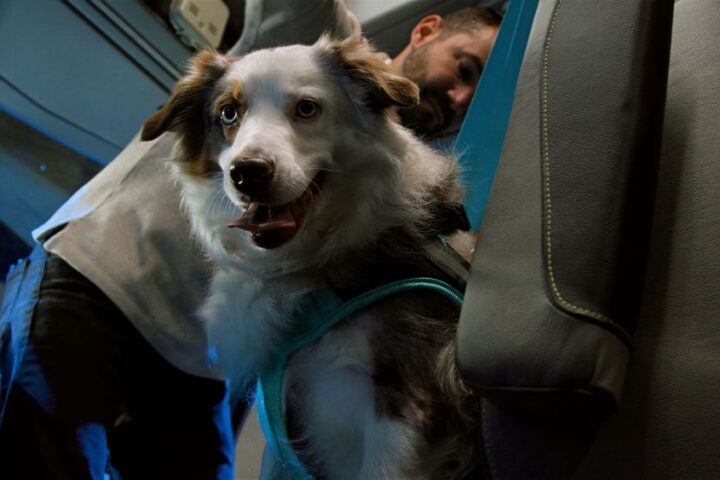Autonomous trucking technology developer Plus has completed fully driverless testing at the Transportation Research Center (TRC) in Ohio, operating a truck with no one in the cab and demonstrating its autonomous system’s ability to handle faults and unexpected situations safely.
The company says it conducted “driver out” tests with its AI-based virtual driver system, SuperDrive, which performed complex maneuvers, including fault injection scenarios and minimal risk maneuvers, without any remote or manual intervention.

“This was an important milestone, because we demonstrated the ability to construct the comprehensive safety pace to operate fully driverlessly,” said Shawn Kerrigan, chief operating officer and co-founder of Plus, during the press conference at ACT Expo in Anaheim. Calif.
SuperDrive is trained to navigate hub-to-hub routes, anticipate traffic, and manage a wide range of road scenarios. The system can perform advanced safety maneuvers such as following cone lanes through construction zones or nudging for barriers. When unexpected conditions arise—including sensor, software, or vehicle-level faults—SuperDrive’s autonomous fallback system activates. It immediately triggers hazard lights and signals, assesses its surroundings, and executes a minimal risk maneuver by pulling over safely to the roadside and stopping, without driver or remote intervention.
Reducing complexity with AI
Kerrigan said the company’s core technological approach has focused on data and AI.
“An important part of how we’ve approached this problem is really — from the very beginning — looking at this as a data and AI problem, rather than a classic robotics problem. Our view is that it comes down to having a really broad set of experience and collecting a lot of data to be able to build a reliable, generalizable virtual driver,” he said. ” Our vision is to have a virtual driver that can really operate worldwide, can adapt like a human, and can reliably handle new, novel and unseen scenarios.”

Plus says it has collected over 5 million miles of autonomous data across the U.S., Australia, Japan, and multiple countries in Europe, training its system to respond to a wide range of road, weather, and traffic conditions, vehicle behaviors, different rules of the road, including left hand driving, and all of what they say feeds into the having the capability to have a general virtual driver.
That data was applied to the company’s AV 2.0 approach that replaces code with deep neural network models, thereby reducing the complexity of vehicle software that today can already contain over 100 million lines of code.
This is the difference between hand-tuned algorithms and extensive neural networks, which can be provided with large and diverse data sets to learn from.
“What you get from this sort of design is a little bit akin to what many of you are probably familiar with, in terms of, say, the voice assistance you’ve used over the years, versus what you see from ChatGPT these days,” Kerrigan explained.
He said the system is designed to reason about new scenarios it has not previously encountered. In addition to decision-making capabilities, Plus has developed what it calls the “reflex” component of the virtual driver, which Kerrigan says enables it to interpret and drive around safely by perceiving and reacting to the things around it in real time.
In 2014, three OEMs — Scania, MAN Trucks & Bus, and International– partnered with Plus to develop Level 4 autonomous driving system for hub-to-hub operations in the U.S. and Europe. Market-ready products are expected to be available soon. US and Europe. Public road testing is already being conducted in Sweden and the U.S., including a recent 170-mile hub-to-hub run in Texas.
“We’re making fantastic progress,” said Kerrigan.

